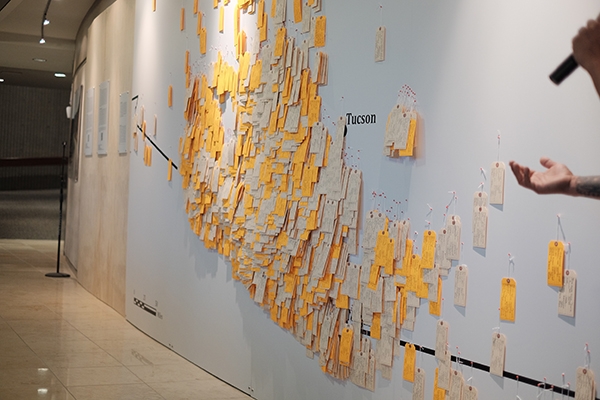Undocumented Migration Project Lab
The Undocumented Migration Project (UMP) is a long-term anthropological study of clandestine movement between Latin America and the United States that uses ethnography, archaeology, visual anthropology, and forensic science to understand this violent social process.
In the mid-1990’s, the U.S. immigration enforcement strategy known as Prevention through Deterrence [PTD] was implemented along the southern border. This strategy increased security in unauthorized crossing areas surrounding urban ports of entry in an attempt to shift undocumented migration towards remote border regions such as the Sonoran Desert of Arizona, where security is less intense but crossing conditions (e.g., terrain) are more difficult. Two decades of research has shown that PTD has failed to deter migration, but has succeeded in shaping border crossing into a well-organized and violent social process with a unique set of material culture and technologies. In response to PTD, the smuggling industry in Northern Mexico has grown to deal with the influx of migrants to the region with local smugglers, vendors, and manufacturers capitalizing on border crossers who need guide services, food, and equipment. The material culture now associated with desert migration includes camouflage clothing, specialized water bottles, and other goods. Started in 2009, the Undocumented Migration Project [UMP] is a long-term anthropological analysis of clandestine border crossings between Northern Mexico and Southern Arizona directed by UCLA Anthropology Professor Jason De León.
The UMP uses a combination of ethnographic, archaeological, forensic, and visual anthropological approaches to understand various aspects of unauthorized border crossings including the many forms of violence and suffering that characterize the process, the distinct experiences of migrant sub-populations (e.g., women, children, LGBT, non-Mexican nationals), and the evolving material culture associated with crossing. By combining ethnographic work in Mexico with forensic and archaeological research in Arizona, the UMP has improved our knowledge of this highly politicized and poorly understood process and demonstrated how an archaeological approach can provide new insight into a contemporary social phenomenon. The research being conducted by the UMP is interdisciplinary, a fact reflected by the project’s diverse theoretical and methodological approaches, the wide range of venues where this work is being published, and the ethnographic-archaeological field school that has been running in Arizona and Mexico since 2010.

Jason De León presenting the UMP's current spotlight exhibition, Hostile Terrain 94, which aims to raise awareness around the humanitarian crisis occurring at the U.S./Mexico border. Photo by the UMP.




